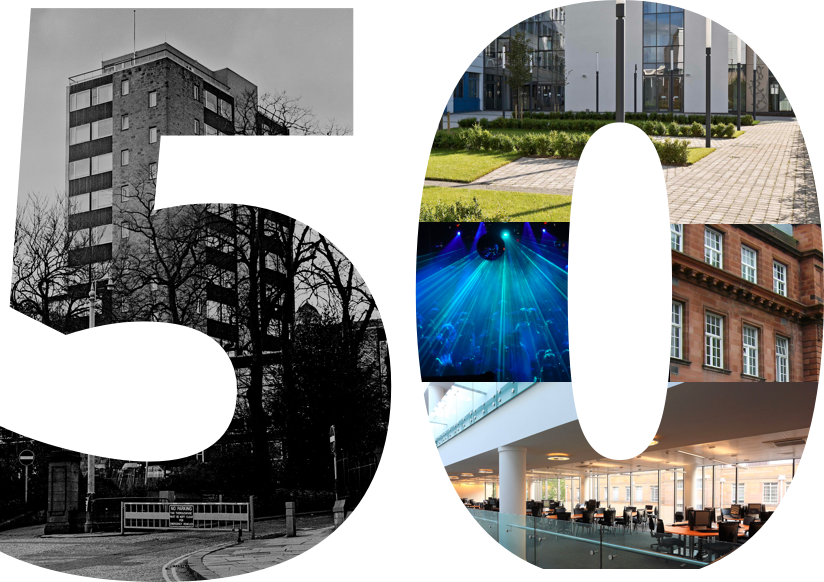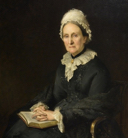
-
Celebrations begin to commemorate 50 years of the University of Dundee
2017 -
The University of Dundee becomes a fully independent institution under the terms of the Royal Charter.
1967 -
Ordinances issued in 1897 made University College form part of St Andrews. and establish a Faculty of Medicine.
1897 -
The Deed formally creating University College Dundee was signed by founders Miss Mary Ann Baxter and her cousin Dr John Boyd Baxter.
1881
The Discovery Expedition
-
date
Fri, 20 Jan 2017
-
Running Time
00:06:04
Hear about the voyage of RRS Discovery from the great granddaughter of one of the most important men on the ship
Episode Transcript
I’m Libby Findlay and welcome to the University of Dundee and our weekly look at the moments in history – both of the institution and the city – that have created the vibrant, dynamic place that we’re now part of. As we celebrate the 50th anniversary of the University becoming independent, we examine the people, discoveries and decisions that have brought us to 2017 as Scotland’s University of the Year and one of the world’s Top 200 universities, delivering teaching and research that is helping to transform lives across society. In the years to come we have ambitions to be the top University in Scotland in everything we do
The Discovery Expedition was planned during a surge of international interest in the Antarctic regions at the beginning of the 20th century and was the first official British exploration of the Antarctic regions since James Clark Ross's voyage sixty years earlier. The expedition was jointly organized by the Royal Society and the Royal Geographical Society, and was created to research and explore this, so far, largely untouched continent. Several leading figures of the Age of Antarctic Exploration launched their careers on this expedition, including Robert Falcon Scott who led the expedition and Ernest Shackleton.
The expedition's ship was built by the Dundee Shipbuilders Company as a specialist research vessel designed for work in Antarctic waters It was one of the last three-masted wooden sailing ships built in Britain. The final cost of the ship was in the region of £4.1 m by today’s money. The Chief Engineer, who was to supervise the fitting out of the engines on board Discovery, was a man named Reginald Skelton. Skelton spent many months in Dundee overseeing the operation. He had served with Scott in the Navy and was hand picked, by Scott, for this voyage. Reginald Skelton was not only the chief engineer on board but also, for the purposes of this trip, the official photographer and my great grandfather.
The ship had a huge wooden hull that was designed to withstand being frozen into the ice. In addition, the propeller and rudder could be hoisted out of the way to prevent ice damage. Iron shod bows were severely raked so that when ramming the ice they would ride up over the margin and crush the ice with deadweight. The Discovery was also the first ship ever built in Britain specifically for a scientific expedition.
The total cost of the expedition was estimated at £90,000, which would be the equivalent of 7.5 million today. The expedition also benefited from significant commercial sponsorship: Colman's provided mustard and flour, Cadbury's gave 3,500 lb of chocolate, Bird's donated baking and custard powders, Evans, Lescher & Webb provided all the lime juice. Jaeger gave a 40% discount on special clothing, Bovril supplied beef extract, and a number of other businesses made significant contributions including Dewars, whiskey distillers in Aberfeldy. I suspect that their contribution was extremely warmly received with reference to the long dark months ahead.
The Discovery left Dundee on July 31st 1901, sailing south to Antarctica.
The expedition’s scientific results covered topics as broad as; biology, zoology, geology, meteorology and magnetism. Amongst the many landmarks and features discovered and named during the expedition, the positions and heights of more than 200 individual mountains were calculated. Various geographical advances were made, including the discovery of both King Edward VII Land and the Polar Plateau on which the South Pole is located.
A number of other major scientific advances were made, such as the discovery of the Emperor penguin colony at Cape Crozier and the gathering of scientific evidence that the Ice Barrier was a floating ice shelf.As a result of the expedition, the location of the South Magnetic Pole was calculated with reasonable accuracy. New marine species were identified and thousands of geological and biological specimens were collected. Finally, Wilson discovered that a diet of fresh seal meat put an end to the scourge of scurvy.
Apart from the numerous and varied scientific discoveries made there were also a number of initiatives taken on by the whole crew in order to combat the difficulties of living under such confined and harsh conditions. A great camaraderie amongst the men was fostered with many plays and musicals rehearsed and performed to the rest of the ships company and there was a publication produced called ‘The South Polar Times’. For the five ‘dark months’ of the year, the officers and crew kept themselves entertained penning any number of articles, poems, drawings and even the odd acrostic to be included in this monthly magazine.
As a trailbreaker for later ventures, the Discovery Expedition was a landmark in British Antarctic exploration history. After its return home it was celebrated as a success.
Dundee’s links with the area are still strong today. In 2005, The South Georgia Heritage Trust was established by the late Brigadier David Nicholls and Prof Elaine Shemilt of Dundee University. The trust aims to preserve the island’s natural and historical heritage for future generations and the University of Dundee works closely to support and develop ongoing projects in the area including eradicating non-native rodents, which prey upon the birds.
Libby Findlay

Employed at the University of Dundee since 2006 working at the Institute of Sport & Exercise in a variety of roles. In March 2016 I joined the International Team as an International Engagement Officer facilitating International Applicants to take up the offer of a place with us here at the University. I still retain an interest in my sporting past and teach a variety of fitness classes in the evenings at the Institute of Sport & Exercise. You can always spot me on campus and around town because I am usually running from place to place and am often in my favourite pink trainers.
Outside interests include: Anything which is active, sport related and outdoors such as Endurance Adventure Racing, Mountain Biking, Motorcycling (both on and off road), Triathlon, Hill-Walking, surfing and many many more.
I am the Great Granddaughter of Sir Reginald Skelton who was asked by Sir Robert Falcon Scott to become Chief Engineer on the Discovery project and trip. He oversaw the fitting of Discovery’s Engines and the fitting out of the ship in general and spent many months in Dundee liaising with the ship builders. On the voyage itself he was entirely responsible for the running and maintenance of the ship and, due to his skill as an amateur photographer, was the official photographer for the duration of the expedition. He meticulously kept his thoughts and experiences in diary form and many extracts from these diaries are now published. Some of his pictures and other artefacts can be found down at Discovery Point in the exhibition and the archives that exist with Dundee Heritage Trust.
-
Celebrations begin to commemorate 50 years of the University of Dundee
2017 -
The University of Dundee becomes a fully independent institution under the terms of the Royal Charter.
 1967
1967 -
Ordinances issued in 1897 made University College form part of St Andrews. and establish a Faculty of Medicine.
1897 -
The Deed formally creating University College Dundee was signed by founders Miss Mary Ann Baxter and her cousin Dr John Boyd Baxter.
 1881
1881